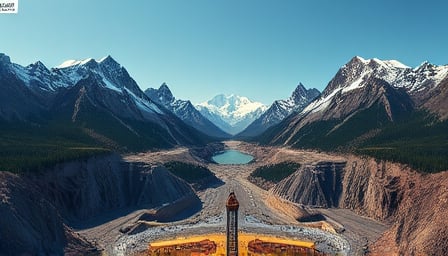Freeport‑McMoRan’s Stock Sinks Amid Tragedy and Production Uncertainty
The market has reacted with brutal force to the fatal mud‑rush at Indonesia’s Grasberg mine, the world’s largest copper‑gold deposit. On the morning of September 24, the company’s shares fell up to 17 %, the steepest slide since the onset of the COVID‑19 pandemic. A single incident has therefore rattled investor confidence and prompted a cascade of analyst downgrades and guidance revisions.
The Incident: Human Cost and Operational Fallout
Two workers lost their lives when a sudden mud‑rush collapsed a shaft at the Grasberg mine. The collapse not only claimed lives but also crippled critical production lines. The company’s own statements confirm that the incident has forced a production outlook revision for the third quarter, with a direct impact on copper output—a commodity whose prices are already volatile. The tragedy underscores a long‑standing risk in Freeport‑McMoRan’s Indonesian operations: the combination of massive underground infrastructure and unpredictable geologic conditions.
Market Reaction: A 16–17 % Crash and Analyst Reassessments
- Price Impact: The share price plunged from $45.36 to $37.48 by market close, a 17 % decline that eclipses the 16 % drop reported by several market‑watch outlets. The fall has pushed the stock closer to its 52‑week low of $27.66, highlighting a sharp erosion of valuation.
- Analyst Sentiment: Jefferies and BMO Capital both trimmed their price targets, citing the incident’s operational and reputational risks. The consensus now reflects a more pessimistic outlook, with a revised target that is roughly 10–15 % lower than before the crash.
- Sector Pressure: The mining sector as a whole has been dragged down. Stocks such as Harmony Biosciences, Cohu, and others followed Freeport’s trajectory, signaling broader investor anxiety about commodity‑heavy, high‑risk assets.
Fundamental Context: A High Valuation Amid Low Realities
Freeport‑McMoRan’s current price‑to‑earnings ratio of 34.0 sits well above the materials sector average, suggesting that the market previously expected robust earnings growth. However, the market capitalization of $64.5 billion now faces a stark reality check: any further production shortfall could erode earnings and justify the lowered price target. The company’s dividend policy remains unchanged at $0.15 quarterly, which may appear attractive but is undercut by the looming operational uncertainties.
Critical Assessment: Is the Decline Justified?
- Operational Risk: The Grasberg incident is not an isolated event; it is the latest in a series of safety and production challenges that have plagued Freeport‑McMoRan’s Indonesian mines. This history should have been priced in, yet the market’s reaction suggests that the perceived risk was underestimated.
- Geopolitical Exposure: Indonesia’s regulatory environment and political volatility add an extra layer of risk. A sudden shift in mining policy or further safety infractions could trigger additional production cuts or even regulatory sanctions.
- Commodity Dependence: Copper and gold are cyclical commodities. A production dip from Grasberg will directly depress revenue in a market already susceptible to price swings.
Given these factors, the 17 % plunge reflects a rational recalibration by investors. The price decline is not merely a reaction to tragedy but a correction for an over‑optimistic valuation that failed to account for the tangible risks inherent in Freeport‑McMoRan’s core operations.
Outlook: Navigating Through Turbulence
- Short Term: Expect continued volatility as the company publishes its revised Q3 earnings. Any further guidance cut or safety incident will likely amplify the downward pressure on the stock.
- Medium Term: The company must demonstrate concrete remedial measures—enhanced safety protocols, diversification of mining assets, and transparent communication—to restore confidence.
- Long Term: If Freeport‑McMoRan can mitigate operational risks and stabilize production, the high valuation could still be justified. Until then, the stock remains a risky bet for investors seeking short‑to‑mid‑term gains.
In sum, the market’s sharp sell‑off is a stark reminder that mining giants cannot hide from the twin specters of operational hazard and commodity volatility. Freeport‑McMoRan’s trajectory will depend on how effectively it can address these challenges and convince investors that its high valuation is defensible.
